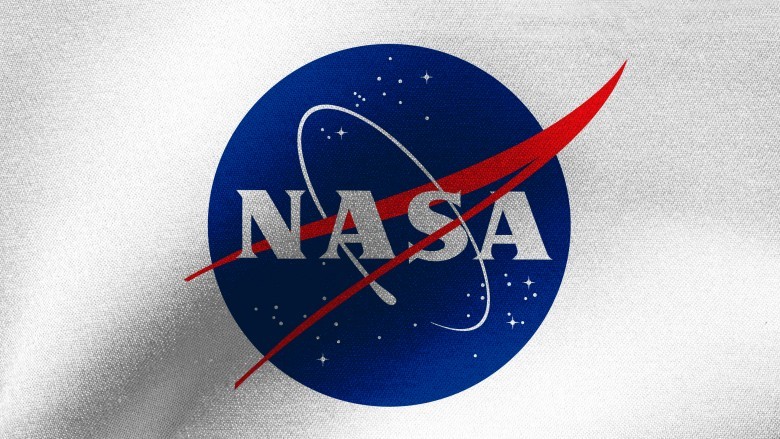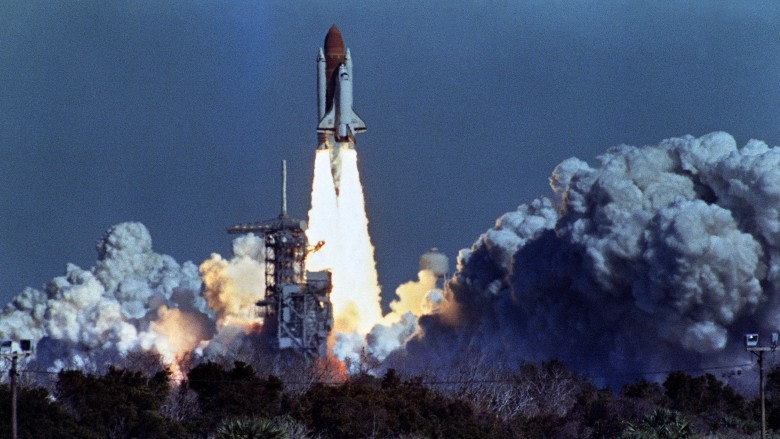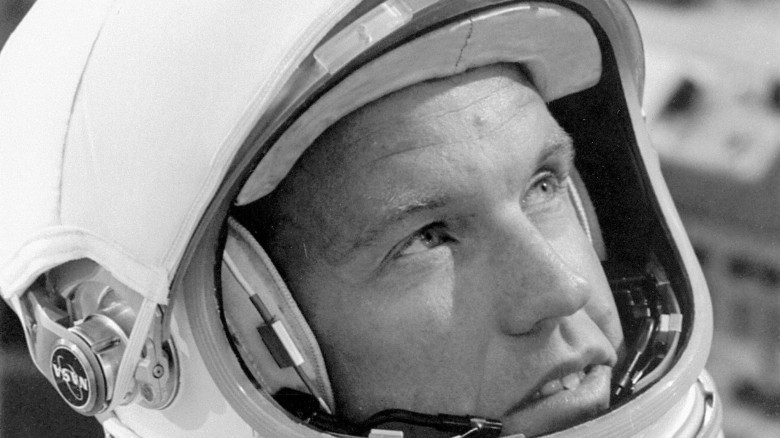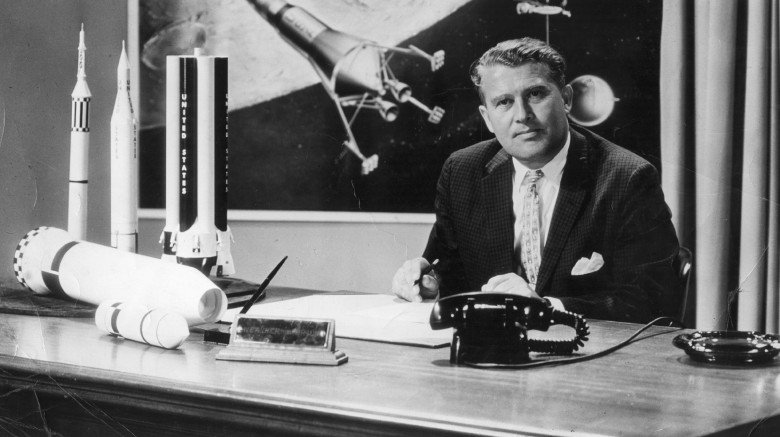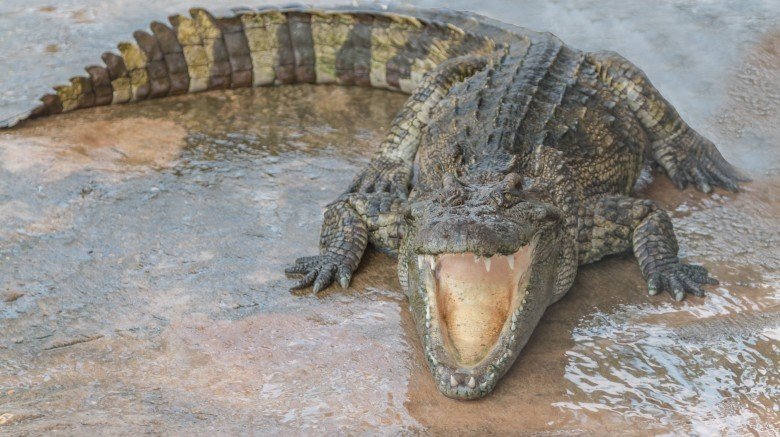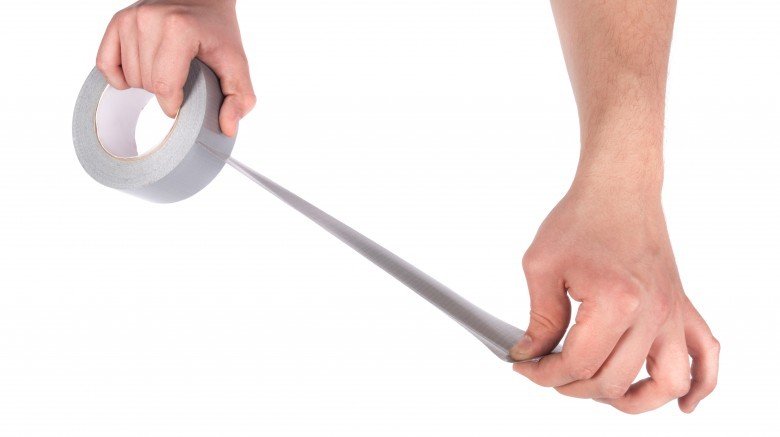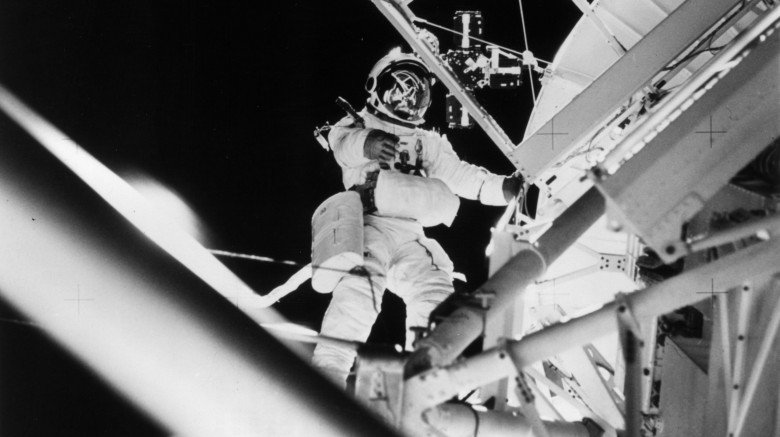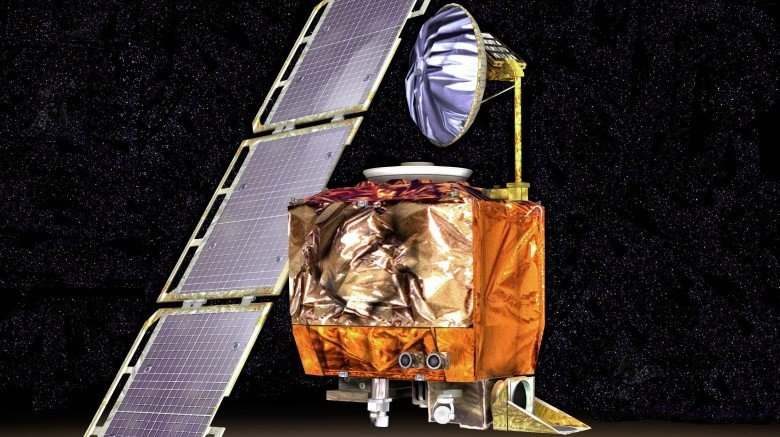The Untold Truth Of NASA
Out of all the organizations in the world, NASA without a doubt is one of the coolest. Who can look at the awesome pictures from the Hubble Space Telescope or watch a video of a rocket launch and not get excited about space flight? But, like most things in the world, NASA has some dark secrets that it'd rather you not know about. Whether they make NASA less or more cool is up to you to decide.
They knew that the Challenger was going to blow up
The 1986 Challenger explosion shocked the world. We had become so complacent with the idea of space travel that seeing the shuttle blow up on live TV was something we couldn't even comprehend. The tragedy was bad enough. What's worse was NASA knew it was going to happen.
Rockets are big tubes of explosive fuel. They are under tremendous stress during launch, so engineers have to make them perfect. No component can be subpar, even down to the screws and seals. An important part of the shuttle's rocket boosters was their O-ring seals, which kept key joints in the rockets together. O-rings are made out of rubber, which, though strong, is susceptible to temperature changes.
Before the 1986 launch, the contractors who designed Challenger's O-rings realized that a recent cold spell had ruined them. Engineer Roger Boisjoly knew the rings wouldn't hold. He called up NASA to tell them that the space shuttle would blow up and they had to delay the launch. NASA refused. Poor Boisjoly went home knowing that the astronauts were going to die. The next day, they did.
For years afterward, Boisjoly blamed himself for the explosion, running over the events and punishing himself. But everybody else knew the truth. Boisjoly wasn't to blame. NASA killed their own astronauts.
They almost lost a spacecraft due to a broken pee bag
Science fiction movies don't really spend much time focusing on how astronauts pee, but it is an ordeal. Without gravity to help in aiming, urine can go everywhere. As NASA started sending up astronauts for longer missions, they had to come up with a way for their boys to go pee. Trial and error was the order of the day, and they almost lost a spaceship from it.
Gordon Cooper flew the last Mercury flight on May 15, 1963. NASA gave him a new collection device to let him urinate during the 34-hour mission. Afterward, systems on the ship started failing. Cooper couldn't figure out what was going on for hours before realizing that the pee bag had sprung a leak. His own urine had betrayed him, shorting out systems all over the ship! He had to make a hair-raising, white-knuckle manual reentry. Landing the capsule without ground control was insanely dangerous and something only a half-dozen pilots could do. Thankfully, he made it, so NASA never had to explain how they lost a spacecraft from pee.
Oh, on that mission, Cooper also saw a UFO, but NASA covered it up and stopped him from talking about it to the press. So it was a pretty weird mission.
They teamed up with the Air Force to nuke the moon just to show the Russians that they could
The Cold War was a world-scale pissing match. Both sides came up with some certifiably insane ideas, and none was as crazy as Project A119, a mission dreamed up by the United States Air Force and NASA to nuke the Moon. For no reason. There was nothing to gain from it. They just wanted to show the Soviets that they could.
That was it. Well, the planners came up with "scientific reasons" for the mission, claiming that it was important to know what would happen if a nuclear bomb blew up on the Moon and what effect it would have on Earth. Honestly, that makes the mission even worse. Aren't their better ways to test if a nuclear bomb blown up on the Moon would mess up the Earth than really blowing up a bomb on the Moon?
Cooler heads prevailed, and the mission got shelved. NASA would have to intimidate the Russians in another way, and other Dr.Strangelove ideas would have to be tested. What's scary, though, is that Project A119 is only one of many Cold War projects. Most haven't been declassified. Who knows what other crazy plans are floating around dusty NASA bookshelves?
The organization that turned into NASA was led by a Nazi rocket scientist
NASA might be a beacon of hope and peace today, but in its infancy, it was led by the exact polar opposite: a Nazi. And not just any Nazi but one of the best Nazi rocket scientists of World War II, Wernher von Braun. During the war, von Braun was in charge of developing Nazi rockets, specifically the V-2 missiles used against the United Kingdom. To make matters worse, he oversaw forced labor from concentration camps to build the terror weapons. Yeah, not off to a good start.
After the war, the victorious countries wanted to get their hands on that sweet Nazi rocket-tech, so they kidnapped whichever scientists they could get their hands on and brought them to their countries. The United States lucked out and got von Braun, which is like finding a holographic (Nazi) Charizard in a Pokémon starter deck. Von Braun got to work with NACA, the precursor to NASA. When NACA turned into NASA and the United States got serious about the space race, von Braun got to work on the Saturn rocket, which shot American astronauts to the Moon. He is one of the most important rocket scientists in history and completely revolutionized spaceflight in his time with NASA.
Historians still debate whether von Braun was a hero, a villain, or something in between, based on how much say he had in the forced labor projects. It's an interesting thought experiment. Do the good deeds somebody does later in life outweigh the evil they did earlier? Is he a hero just because he ended up working for our side? Thankfully, none of us will ever be in the place he was in, forced to work for the Nazis, so it's really hard to pass judgment. Still, NASA would rather downplay the Nazi foundation of their rockets. We can't blame them. We don't need more space Nazi conspiracies.
NASA and the Air Force fly a secret space shuttle
As much as NASA likes to hold up its laudable scientific goals, they sure do a lot with the military. One of the weirdest things they do is help the Air Force run its top secret X-37B spaceplane. It looks like a miniature space shuttle, but nobody knows exactly what the X-37B does.
While NASA didn't build the X-37B, they usually help the Air Force in launching operations. In return, they get to piggyback some of their missions on the spaceplane. It flies in a low-orbit and moves around a lot using state-of-the-art Hall-effect Ion thrusters straight out of science fiction. And besides NASA science projects, the Air Force keeps mum about what the X-37B is doing in space.
People who are really interested in Air Force special projects love to speculate about what the X-37B is doing. Some think that those super cool ion thrusters are being tested for future spy satellites. Most likely, the X-37B has tons of cameras and surveillance equipment, flying around the globe spying. Whatever the case, the X-37B logs huge 600-day missions, and it is currently flying one, orbiting the Earth doing its secret things. Skilled skywatchers have started to track the spaceplane in the sky, but be careful. If we are looking at the X-37B, it is looking back at us. And it's probably a prototype of the HAL 9000 computer, for all we know.
NASA has a gator infestation problem
Space travel is super dangerous. Astronauts have to deal with space radiation, muscle atrophy, potential explosions, and ... gators? Turns out, NASA has a huge gator infestation problem. Anybody who has lived in Florida probably isn't surprised by that. Since NASA operates 145,000 acres of land in Florida, there are bound to be gators who have found themselves displaced by rockets and research centers.
Usually, the gators are hiding under cars, but sometimes, they climb over fences and find their way into research centers. Even though NASA also has issues with rattlesnakes, buzzards, and even the occasional wild pig, the gators are certainly the most extreme animal problem that they have to deal with. Security teams around the NASA campus are trained on what to do when an alligator gets somewhere they don't want to be. They are probably more worried about stray gators than foreign spies.
Fortunately, the big lizards haven't stopped any space launches ... yet. Given enough space launches, we wouldn't be surprised to find out that one of them makes their way into a rocket. Which may not be so bad because Zero-Gravity Gators sounds like the coolest Syfy original movie yet.
NASA's plan to deal with a crazy astronaut is to restrain them with duct tape
Space travel is awesome, but NASA realizes that staring out in the vast expanses of nothingness while being cooped up in metal cans for long periods of time might aggravate some previously undetected anxiety issues. If an astronaut goes Major Tom and does something crazy, NASA has a plan. We'd expect some crazy supercomputer-powered, vacuum-proof, multi-million-dollar technological solution. Nope. It's just duct tape.
Astronauts can't use stun guns in space or any sort of weapons that use projectiles. Those weapons risk damaging important tech in the space station or even punching a hole in the capsules. If an astronaut loses it, the others just have to restrain him.
Standard operating procedure tells astronauts to restrain the crazy person with duct tape, tie them down with bungee cords, and inject them with tranquilizers if absolutely necessary. There is some sort of comforting simplicity to their approach. Duct tape is so dependable that there is no way that the astronauts can mess up using it. But the only thing keeping a crazy astronaut from taking over the International Space Station and declaring it his space empire is a lowly roll of tape. Johnson & Johnson must be proud.
The crew of Skylab had a mutiny in 1973
Since astronauts are professionals with intense training, space mutiny seems like something that only exists in terrible '80s B-movies. At least, that's what NASA wants you to think. NASA utterly refuses to talk about the Skylab 4 mission in 1973, where the astronauts on the space station were so overworked by ground crew that they held a mutiny and went on strike.
When the astronauts arrived in Skylab, ground control pushed them hard to complete a laundry list of chores, most of which just involved moving unwieldy equipment. The crew got pissed off. They were astronauts, not some minimum wage manual laborers. After six weeks of working 16-hour days, with the only time off being to catch a snack and sleep, the Skylab crew decided that they wanted a day off, and they'd mutiny to get it.
Suddenly, ground control found that they couldn't talk to Skylab. The crew had turned off communications. With nobody to tell them what to do, Skylab belonged to the astronauts. They used the time to sleep, look out the windows at space, and ponder the amazing experience of space flight.
Instead of declaring their own country or something like that, Skylab re-established contact with ground control, but not without making demands for shorter workdays and more control over planning. Facing another mutiny, NASA agreed, and the crew of Skylab enjoyed the rest of their mission. Obviously, NASA doesn't want this story becoming widespread, but ... oops. We shared it anyways.
They lost a super expensive satellite due to a dumb math error
We understand people messing up on complex differential equations, but NASA scientists should at least know basic mathematics like how to convert units. Right?
In 1999, NASA launched the Mars Climate Orbiter. This was a groundbreaking mission. The Mars Climate Orbiter was designed study the planet's weather conditions, atmospheric composition, and do a ton of other experiments. Getting a satellite to perfectly orbit the Earth is a hard enough problem mathematically. Imagine shooting a satellite from Earth and perfectly putting it into orbit around another planet. That's insanely complex. If the satellite got too low in the Martian atmosphere, the friction would burn it up, and the multi-million-dollar satellite would be lost forever.
NASA had to get everything perfect. But when the orbiter got to Mars and fired its thrusters to enter the Martian orbit, the craft started going way too fast and plowed into the surface of the planet. NASA freaked out.
After tons of reviewing the mission, they realized what the mistake was. Somebody programmed the computer flight control software to calculate the thrust in the English unit of pounds, instead of the Metric unit of Newtons. With that little mistake, all the other flight control calculations were off, and the orbiter crashed. Since then, the fiasco has turned into a cautionary tale for physics students worldwide about checking units. How embarrassing.
NASA has a haunted launch pad
Scientists have no need for the supernatural, relying on hard data and observable evidence. It seems like the ghosts from the paranormal realm have issues with that and have decided to haunt NASA. Right in the hub of objective scientific research, there are stories of ghosts—the ghosts of dead astronauts, according to paranormal enthusiasts.
Launch Complex 34 was one of NASA's main pads in the '60s. Tragedy struck it early in the space race. During a ground test on LC-34, the Apollo 1 capsule burst into flames, killing the three astronauts onboard. It was America's first space tragedy and almost derailed the Apollo program.
While the astronauts are held in reverence by NASA, they seem to want to stick around their old job. Paranormal investigators who also love spaceflight have explored LC-34, and during their investigations, they have heard screams coming from the top of launch pad and an overwhelming sense of sadness and fear. Supposedly, these are the ghosts of the Apollo 1 crew. Rumor has it that the paranormal issues became so bad that LC-34 got closed down and set off-limits to the public. That's a pretty weird reaction from scientific organization.
Eventually, LC-34 reopened to visitors. Even without the ghost, LC-34 is creepy, with its decaying concrete structure. But interacting with the ghosts of pioneer astronauts is worth the trip and potential spooks. Just don't, like, bring a lighter or something. That wouldn't go over well, we imagine.
